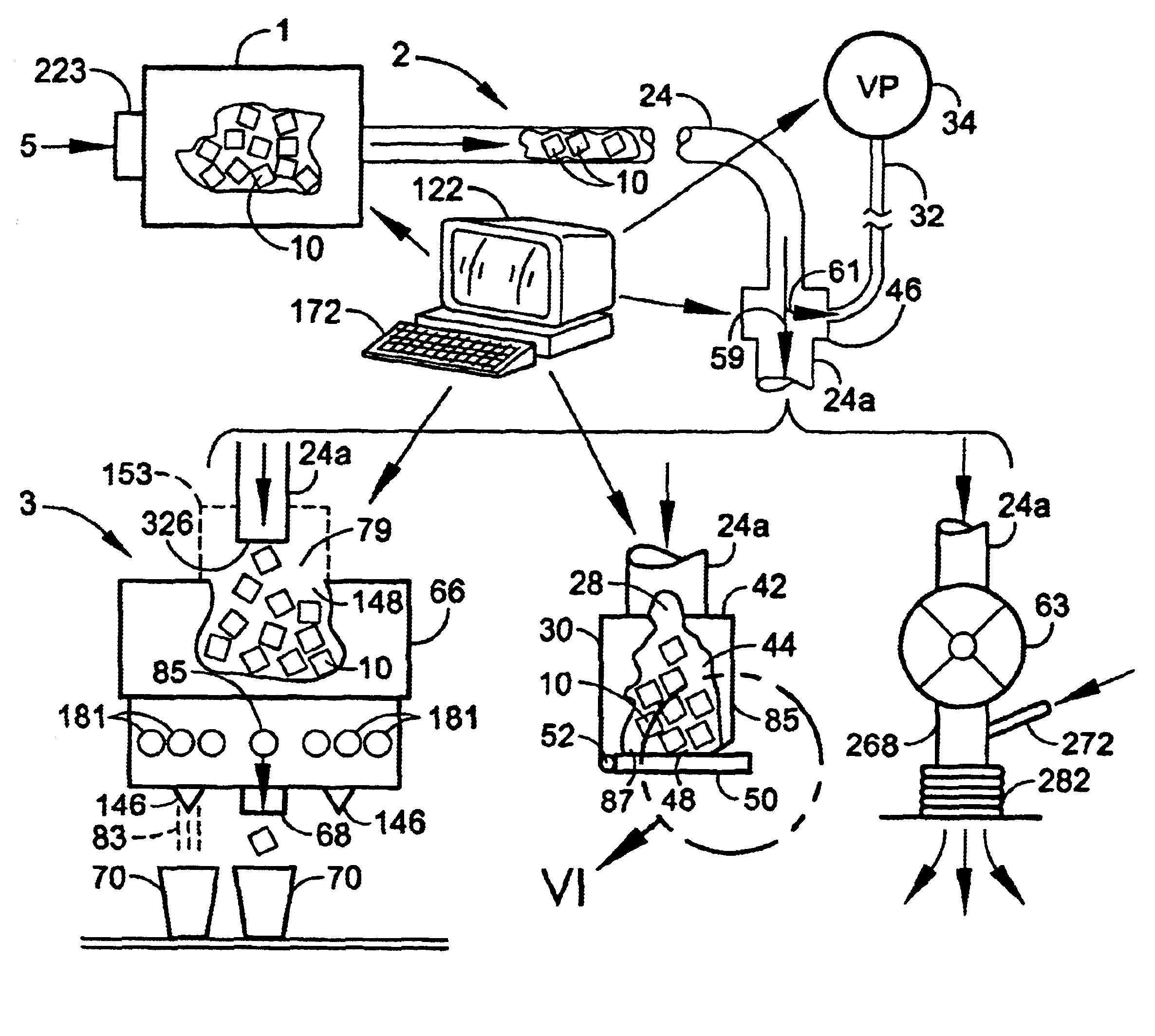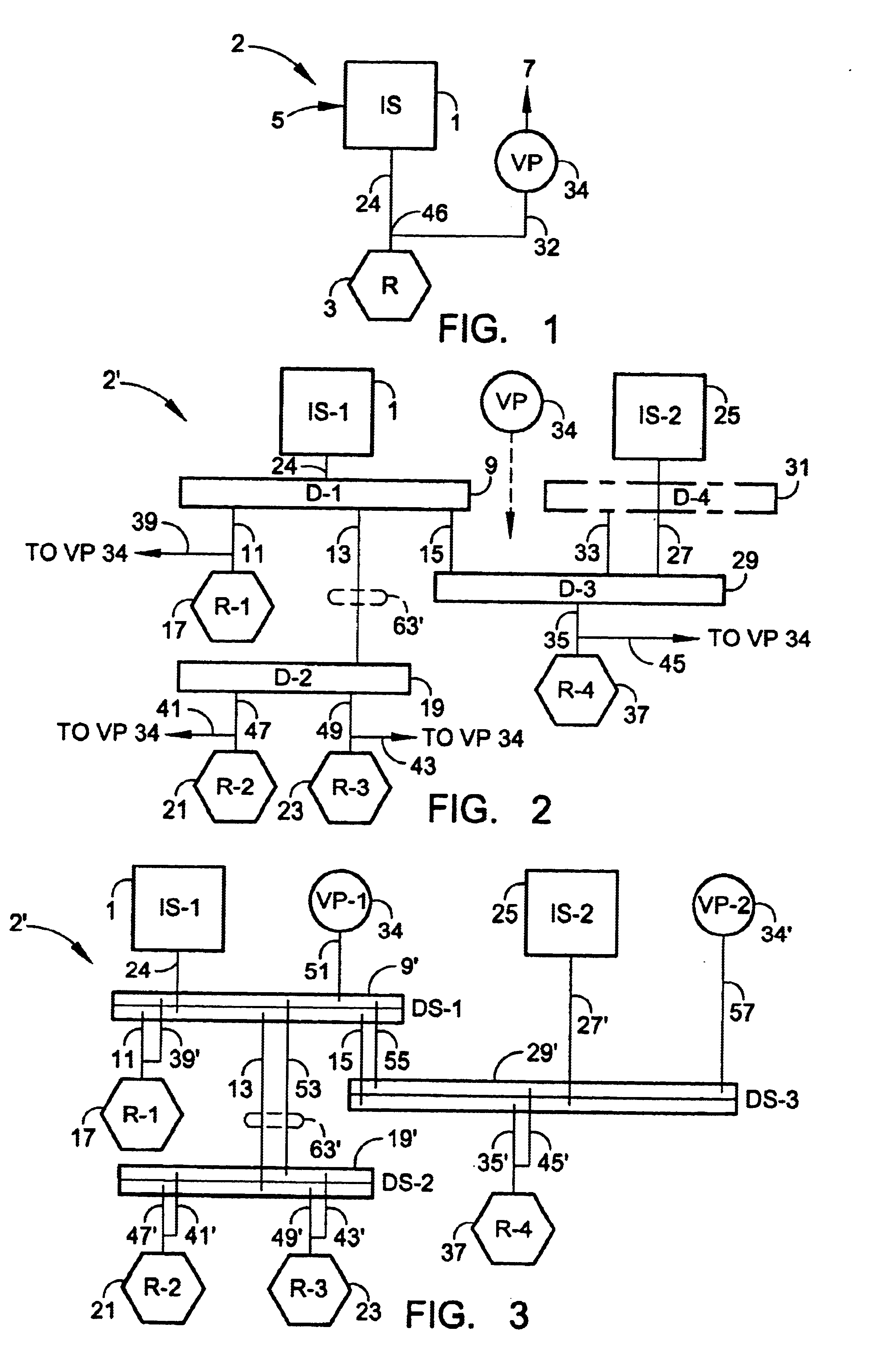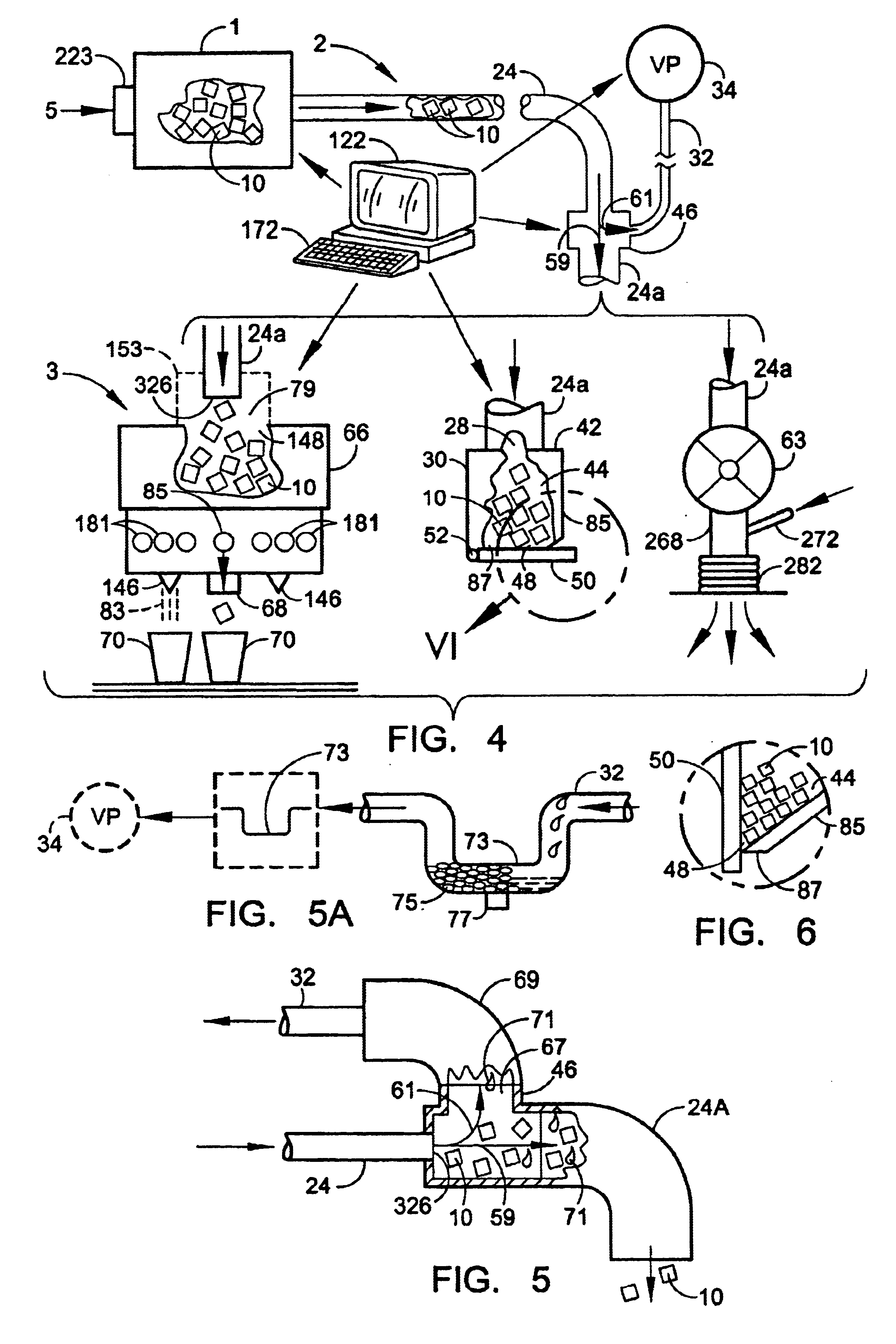Vacuum pneumatic system for conveyance of ice
a pneumatic conveyor and vacuum technology, applied in the direction of liquid transfer devices, packaging goods types, lighting and heating apparatus, etc., can solve the problems of affecting the service of drive-up and counter patrons, and often not getting periodic manual refilling of ice bins
- Summary
- Abstract
- Description
- Claims
- Application Information
AI Technical Summary
Benefits of technology
Problems solved by technology
Method used
Image
Examples
Embodiment Construction
For brevity herein, the "pieces" of ice which are conveyed will frequently be exemplified and referred to simply as "ice cubes." It will be understood, however, that the term "ice cubes" is not to be restricted solely to ice pieces of essentially cubical shape, but will include ice pieces which have other substantially regular shapes such as half moons, crescents, cylinders, disks and various solid polygons. It is also intended to include pieces with irregular shapes, such as those formed by crushing, fragmenting, chipping or otherwise comminuting large solid blocks of ice into such irregular shapes. Ice which may be conveyed by this systems includes those ice products commonly known as "cube ice" (the above mentioned "ice cubes:), "nugget ice," "bridged ice," "granular ice," "chunk ice" and "crushed ice," or any other form or size of vacuum pneumatically conveyable ice pieces, regardless of the name applied.
Further for brevity, the conveying gas will be exemplified by air, which wi...
PUM
| Property | Measurement | Unit |
|---|---|---|
| Pressure | aaaaa | aaaaa |
| Angle | aaaaa | aaaaa |
| Length | aaaaa | aaaaa |
Abstract
Description
Claims
Application Information
 Login to View More
Login to View More - R&D
- Intellectual Property
- Life Sciences
- Materials
- Tech Scout
- Unparalleled Data Quality
- Higher Quality Content
- 60% Fewer Hallucinations
Browse by: Latest US Patents, China's latest patents, Technical Efficacy Thesaurus, Application Domain, Technology Topic, Popular Technical Reports.
© 2025 PatSnap. All rights reserved.Legal|Privacy policy|Modern Slavery Act Transparency Statement|Sitemap|About US| Contact US: help@patsnap.com



